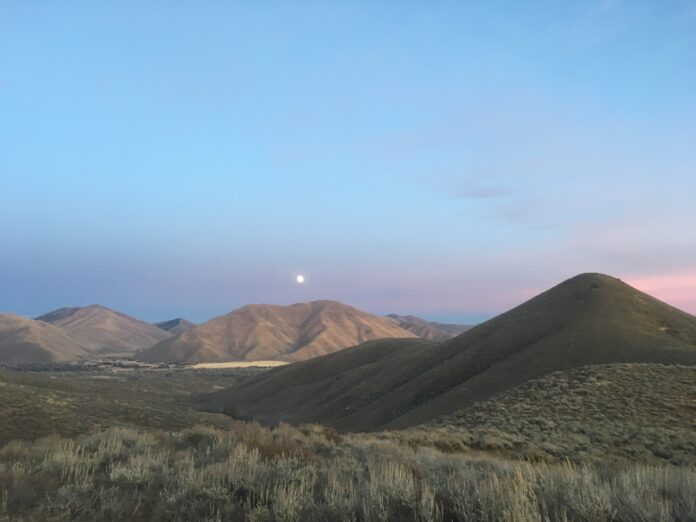BY HANNES THUM
 On a recent Sunday evening, I walked outside to one of the wildest sunsets I have ever seen. The sky, in all directions, was glowing with a deep purple. A few pinks were thrown in there, and maybe a lace of orange around the bottom of a cloud, but the main theme of things was like a velvet slap in the face: purple.
On a recent Sunday evening, I walked outside to one of the wildest sunsets I have ever seen. The sky, in all directions, was glowing with a deep purple. A few pinks were thrown in there, and maybe a lace of orange around the bottom of a cloud, but the main theme of things was like a velvet slap in the face: purple.
It was the day that daylight savings time (which I’ve never understood) had ended, so my internal clock was a bit disjointed (as it related to the clock on my wrist, at least) already. And I had been inside for a while, so I hadn’t even really realized the sunset was happening. When I walked out of the building and into the sky, I was flabbergasted.
From where I stood in Sun Valley, I could see Baldy, wrapped in a field of purple. The deepest cut in the western horizon, Warm Springs canyon, where the sun had set, was the brightest part of the lightshow. But even straight up, it looked like somebody had slathered bright purple fingerpaint across the sky. And to the east, where I could see the ridges above Summit Creek and Phi Kappa Mountain: more purple. Rich and lavish and, truly, otherworldly.
It felt simultaneously like something was terribly wrong and like a gift from the universe. Like a flash flood in the desert. Like the eye of a hurricane. Like a purple avalanche.
Suffice it to say, I stood there for a while, gawking. Eventually, I got into my car and went home.
We forget about the sky, sometimes. Day in and day out, night in and night out, it is there. When we’re going about our business, it’s there. When we’re asleep, it’s there. And because most of our earthly duties and interests lay more at eye level, we can go a long time without checking it out.
The atmosphere, that three-dimensional layer of gasses (“air”) that covers our planet, is a wild thing to ponder. It’s very thin, for one—although the exact boundary between our atmosphere and outer space is somewhat fuzzy to define, the part of the atmosphere that we breath and that contains our weather (it’s called the troposphere) is only maybe a dozen miles thick. If you traveled upwards the distance you regularly travel sideways between Ketchum and Hailey, you would leave it.
That slim cushion of air is all that makes this planet liveable. Breathable. Safe from the cold, infinite vacuum of space, from the wanton celestial radiation that makes most other places uninhabitable. It’s also responsible for the astounding palette of colors that grace the sky every day and every night.
Maybe it’s just in my imagination, but I like to think that before movie theaters and flat-screen televisions and sitcoms streaming in the palms of our hands, our ancestors would have spent a great deal more time watching the sky do its thing. Worthy of a look, on occasion, surely.
Hannes Thum is a Wood River Valley native and has spent most of his life exploring what our local ecosystems have to offer. He currently teaches science at Sun Valley Community School.



